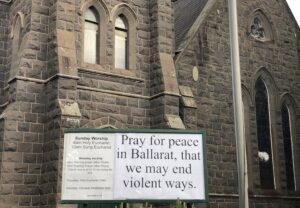
By Tim Kroenert
21 January 2022
The 2007 animated film Persepolis was a landmark of autobiographical filmmaking. Co-written and co-directed by Marjane Satrapi based on her graphic novel of the same name, it took a harrowing, socio-politically charged narrative about growing up under fundamentalist Islam in Iran and rendered it in a form more typically associated with superheroes and family films. Its bold, hand drawn imagery lent a timeless immediacy to its story of oppression, displacement and trauma, and elevated it to the level of modern day myth.
Flee achieves something similar with the story of Amin, who as a youth escaped the civil war in Afghanistan and the brutality of the Mujahideen to live a relatively safe and successful adult life in Denmark.
His story has the hallmarks of many refugee stories we have heard before in Australia: sinister people smugglers, treacherous boat rides, tense departures under cover of night, clashes with iron fisted bureaucracy.
But despite all its familiarity, Amin’s story is also painfully specific. Not only because Amin is gay, which posed a threat to his family relationships and communal existence as a child in Afghanistan, separate to any broader civil unrest that came later. There also is a secret at the centre of his story which in Flee, Amin shares for the first time.
The film’s director, Amin’s old schoolfriend Jonas Poher Rasmussen, coaxes the story out of him through patient and empathetic “talking head” style interviews. These have then been animated in the same impressionistic, hand-drawn style as the memories Amin recounts. The approach helps blend present day with past into a cohesive whole and, as with Persepolis, lends a mythic quality that a more traditional documentary format would have lacked.
Amin and his family, fleeing by foot, pause among cold dark trees as their guide considers executing an elderly woman who is slowing them down. The desperate, crammed occupants of a dilapidated boat raise imploring hands to a cruise liner while tourist cameras gawk back at them. Amin harbours a secret crush as he shares warmth and his Walkman with another boy in the back of a people smuggler’s van. Rendered in pen and ink, these landmark moments on Amin’s journey, become the stuff of transcendent fable, even as they bring flesh and blood to the weary voice that narrates them.
The animation works on a pragmatic as well as a stylistic level. It provides a veneer of distance, a safe space in which Amin can reveal the secret at the heart of his story.
This secret, which I won’t spoil here, has been an obstacle to true contentment in the new life he has built for himself. In the present day, his loving partner Kaspar is busy trying to purchase a house for them to live in. Amin, for reasons unknown to Kaspar, is resistant to this commitment to settling in a single place. By unburdening himself of this story in its entirety, perhaps that house can also be a home for the perennially displaced Amin.
In cinemas 17 February.






